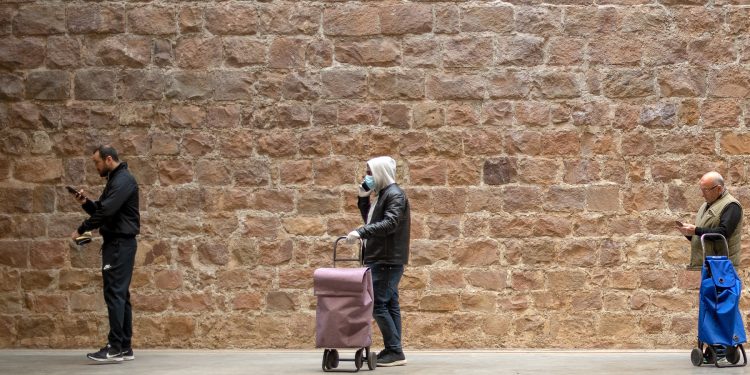In the wake of Covid-19 outbreak the world over, the Department of Health and Family Welfare, Government of India has issued guidelines on ‘community alleviation strategies’. The guidelines aim at limiting the spread of COVID-19, which include recommendations for ‘social distancing’ – a term that epidemiologists use to refer to a conscious effort to reduce close contacts between people and hopefully to stymie community transmission of any virus including the coronavirus.
In medical science, it is expressed as ‘flattening the curve’ – slowing the spread of infection, which can be almost as important as stopping it altogether. However, what exactly is ‘social distancing’ all about? Even detailed instructions are difficult to sift for actionable advice.
People often ask questions like: If I have a fourth date tonight, should I go? If I am invited to a wedding in another state, is it too late to cancel? If we are on lockdown and I live alone, can I walk to my friend’s apartment when I feel monotonous? If I end up officially quarantined, can I walk around the park or down the streets at night for fresh air?
The guidelines issued by Government of India acknowledge factors like the size of a community, its population density, its access to health care and caveats that social-distancing measures can ‘be scaled up or down depending on the evolving local situation’.
“It is a hard time because many of the recommendations made are about increasing distances between people but of course being close to people is what makes life pleasurable. So this is going to be a very difficult time,” Carolyn Cannuscio, director of research at Centre for Public Health Initiatives at the University of Pennsylvania opined.
There is a general consensus that while young and healthy people who are at lower risk for suffering severe illness from the deadly coronavirus at least have to lock themselves in their homes for the next month and do need to dramatically alter their daily lives.
DO avoid gatherings / groups:
One should avoid social gatherings as well as groups of more than seven people and keep at least a safe distance, in between two persons. The point is that the larger the number of gathering or group, the more difficult it is to control and people do not maintain proper distance from each other.
DO stay at least six feet away from others:
The six feet limit is safe because respiratory droplets emitted from a person’s nose or mouth by coughing, sneezing and other activities can travel up to this distance. This includes situations when a person is in a line or on an escalator.
DO aggressively wash hands and disinfect surfaces:
One should keep hands away from one’s own face and wash hands as frequently as possible. Also, use alcohol-base hand sanitiser, if soap and water are not available. It is advisable to disinfect things that one will touch for a while, like the handle of shopping basket or cart.
DO use other means to interact remotely:
Social distancing does not mean emotional distancing. One can always use different communications methods to communicate. In fact, this may be a time to step up communications to make sure that one’s loved ones are not feeling too lonely and isolated. Video communications can help as these bring in a personal touch.
DO take precautions for deliveries or take-outs:
Even if one can cook, one may not always have the time or energy. When using services of couriers or e-shopping, one should try to maintain utmost hygiene and stay away from probable contamination. To minimise physical contact, have the person place the desired good somewhere, so that you can pick it up (put down the potato and pineapple pizza, and step away from the box). Make sure that the item is properly packaged. Disinfect or safely dispose of anything that may have contaminated such as packaging materials.
DON’T assume that someone is not infectious:
One cannot tell if a person is infected, just by looking at him or her. Simple appearances and no sign of symptoms cannot rule out a severe acute respiratory syndrome coronavirus-2 (SARS-CoV-2) infection. A study found that 17.9% infected with the virus never had shown any symptom. People can be infected much before they develop symptoms.
DON’T go to indoor public locations:
Even if an indoor location looks empty now, the virus could still be around on surfaces and objects. A study recently published in ‘The New England Journal of Medicine’ found that SARS-CoV-2 remained detectable on copper for up to four hours; on cardboard for up to 24 hours; on plastic and stainless steel for up to two to three days.
DON’T think that social distancing means never go outside:
The outdoors may offer plenty of space to roam without having to be too close to those other coughy, sneezy and farty beings. Of course, keeping completely physically separate from everyone living with you may not be very practical to do. For example, one may have to burp and bathe the younger children. However, do what you can to prevent anyone from bringing the virus into your living quarters, such as having everyone wash their hands and change their clothes as soon as they return home. If someone does get sick, isolate him or her as soon as possible and contact a healthcare professional.
DON’T visit persons having weaker immune system:
Such folks may be even more vulnerable to have very bad and even life-threatening outcomes from COVID-19. One should not bring an unwanted gift with and accidentally infect the aged, sick and weak persons in family or otherwise.
PNN & Agencies






































